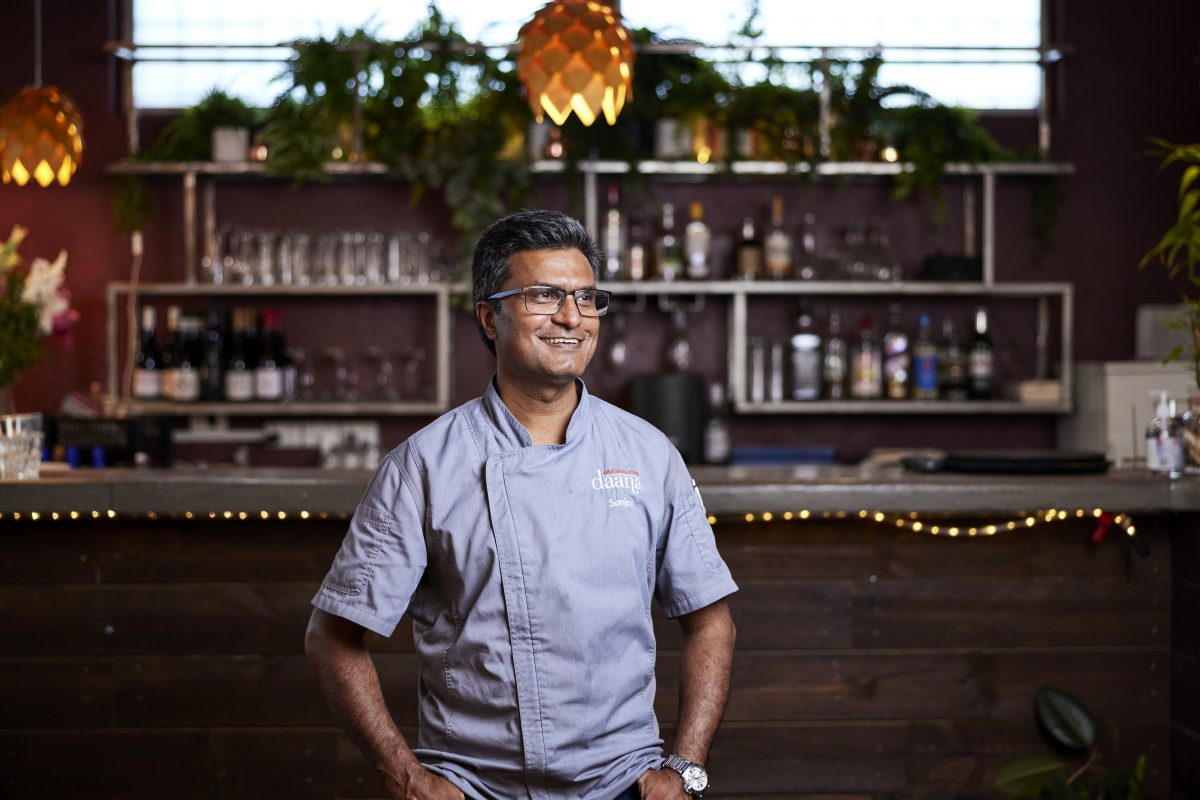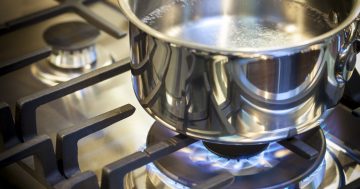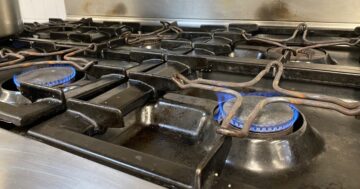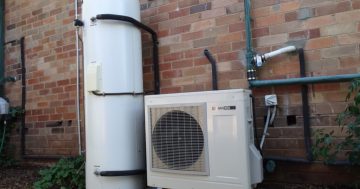
Chef Sanjay of Canberra’s Daana restaurant says induction trumps gas for control, speed, safety and energy efficiency. Photo: Daana.
Long-considered a dirty word in commercial kitchens and at home, today’s induction technology is casting off its ill-begotten reputation to emerge as a confident challenger to gas.
Among the internationally renowned chefs who have thrown their weight behind induction cooking are Neil Perry and Shannon Bennett.
In Canberra, Chef Sanjay Kumar of Daana restaurant has added his voice to the growing chorus of converts.
He’s been using induction at home for almost 10 years, initially opting in for one of its undisputed drawcards – safety.
“My younger daughter is 11; she’s been using it the past couple of years,” he says.
“We were not 100 per cent sold on induction until we saw a demo.
“It’s just so quick, easy and safe.”
He says no sooner does he remove a pan off the burner than he can fearlessly wipe the stovetop. There’s no aggressive sizzle of evaporating water or singed cloth.
That’s because induction cooktops cool down quickly because they use electromagnetic energy to convert the pots and pans themselves into heat sources.
This translates not only to safer and easier cleaning but also energy efficiency – another uncontested induction quality.
Sanjay says much less energy is expelled in heating the air around the cooking.
“You’re using the heat where it’s required – to heat the pot – rather than using it to heat the air around.
“That adds further to the technology’s safety because you can still hold the pot handles comfortably without them heating up.
“Another bonus is the kitchen doesn’t get as hot.”
For serious cooks, control is arguably a cooktop’s most crucial feature. In the past, induction has struggled to shed the perception that it lacks control and is slow to heat up. But chef Sanjay says this hasn’t been his experience.
“Induction can heat up quicker than gas and allows for more precise control of incremental temperatures,” he says.
“What does make a big difference is the quality of the pots and pans you use. You’ll achieve the best results if you invest in quality cookware.”
While induction technology only works with cooking vessels made of certain materials, you don’t need to toss your entire collection to make the switch – anything made from iron or stainless steel works fine.
Because the technology relies on electromagnetic conduction, magnets will stick to anything appropriate. So you can test this quite simply at home.
As the ACT looks towards its legislated zero net emissions target by 2045, induction cooking may become the technology of choice for Canberrans.
In 2019 the ACT Government released its Climate Change Strategy, recommending the removal of mandatory gas connections for all new suburbs in the ACT.
Greenfield development Ginninderry – the first community specifically designed for its homes to be all-electric – was partly responsible for this change when it didn’t connect gas in the new estate.

By all measures today’s induction cooking outstrips gas. Photo: Ginninderry.
Ginninderry Development Sustainability manager Jess Stewart says it plays perfectly into its vision of creating “a sustainable community of international significance in the Capital region”.
“Mains gas is no longer the cheap green alternative,” she says.
“Green gas is not currently cost-efficient for residential communities and clean, renewable energy can be produced easily by electricity. There is nothing in a home that you use gas for – heating, cooking or hot water – that can’t be supplied cheaper and more efficiently with electricity.
“We established the Ginninderry energy pilot project to ensure we work with the ACT Government and Evoenergy to learn from our all-electric community.”
While residents can opt for bottled gas, which Jess says is more economical than mains gas, induction is cheaper still.
“Electric cooking is between 80 and 90 per cent more efficient,” she says.
“Obviously that’s better for our environment but you’re also saving on your bills.”
She says induction’s reputation as the poor man’s gas stems from confusion with ceramic cooktops.
“Those things took forever to heat up and weren’t particularly efficient,” she says.
“A lot of people also grew up with gas and want to stick to what they know. The truth is induction has better control, faster speeds and is safer, more efficient and economical and so much easier to clean.
“It’s the way cooks – professional and at home – are going into the future.”




















